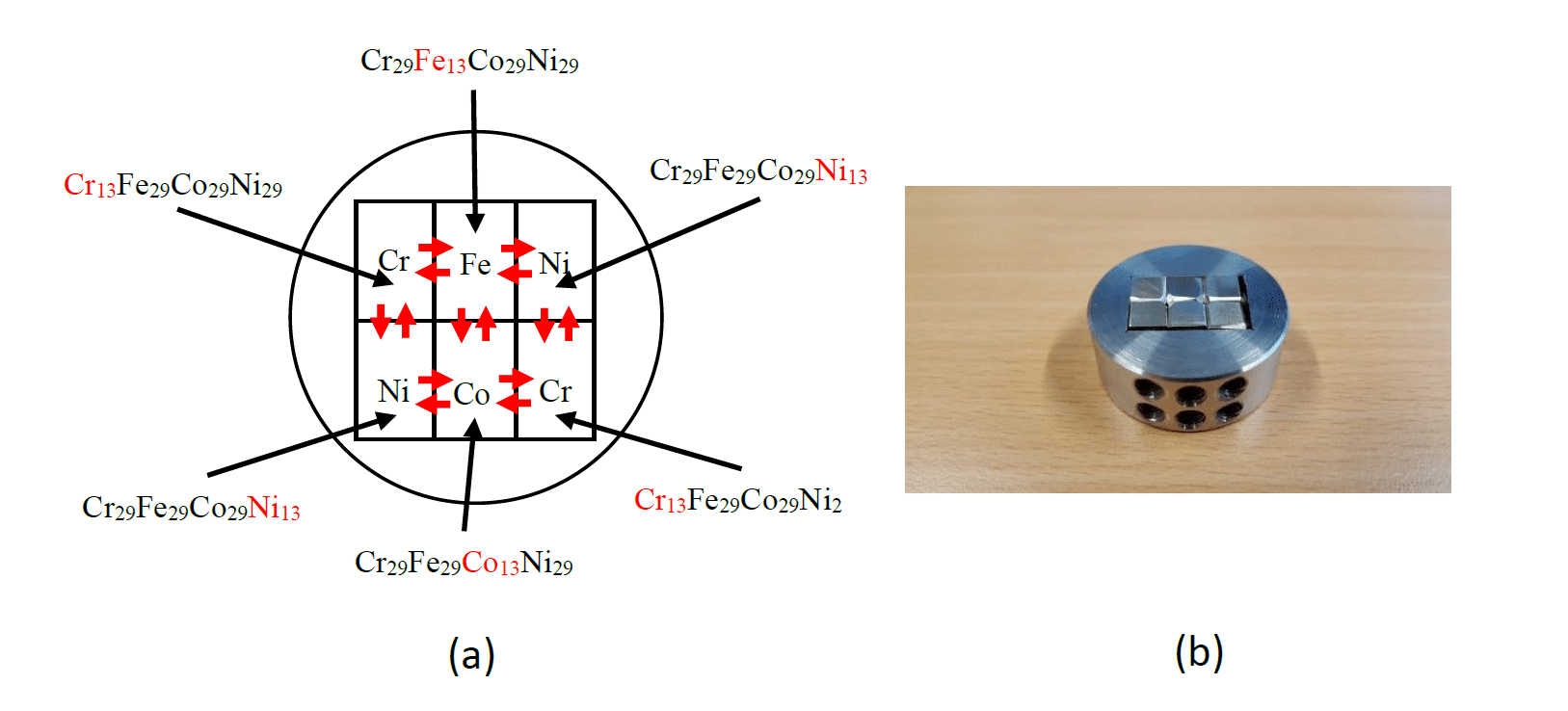Use of diffusion multiples to understand interdiffusion processes in compositionally complex high-entropy alloys (HEAs)
2Materials Science and Technology Division, Oak Ridge National Laboratory, University of Tennessee
HEAs are composed of four or more major elements with similar concentrations. Consequently, no single element can be considered as the solvent. It is not clear how this affects the diffusion of the constituent elements. Intriguing possibilities involving sluggish diffusion, formation of vacancies, and varying heights of diffusion barriers have been put forward [1,2]. It has also been reported that the interaction between different atoms plays a key role [3]. We investigate interdiffusion processes in HEAs using diffusion multiples. Four single-phase Cr-Fe-Co-Ni alloys are considered, Figure 1a. In each alloy, the concentration of one element was decreased (from 25 to 13%). This was balanced by an increase of the three other elements (from 25 to 29%). The gradients in chemical potentials associated with these differences drive diffusional fluxes, Figure 1a. The actual diffusion multiple is shown in Figure 1b.

Figure 1: Diffusion experiments. (a) Alloy compositions and fluxes (schematic). (b) Diffusion multiple.
After thermal exposure at 900°C for 100 hours we measure the concentration profiles and evaluate the intensities of characteristic X-rays (EDX and EPMA). Preliminary results on interdiffusion coefficients are reported.
References:
[1] K.-Y. Tsai, M.-H. Tsai, J.-W. Yeh, Acta Materialia 61, (2013), 4887.
[2] M. Vaidya, S. Trubel, B. S. Murty, G. Wilde, S. V. Divinsky, Journal of Alloys and Compounds 688, (2016), 994
[3] K. Kulkarni, G. P. S. Chauhan, AIP Advances 5, (2015), 097162.

Powered by Eventact EMS